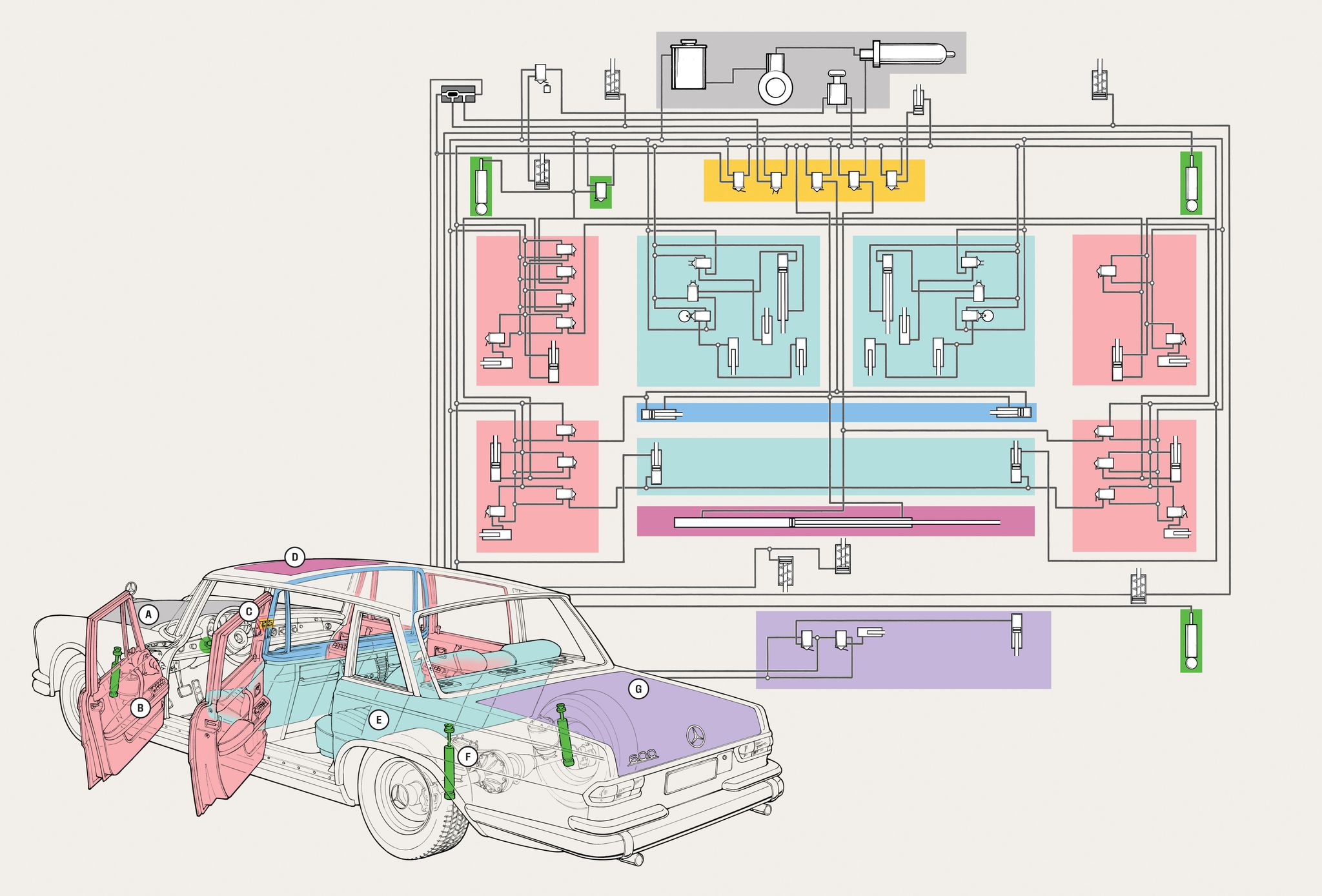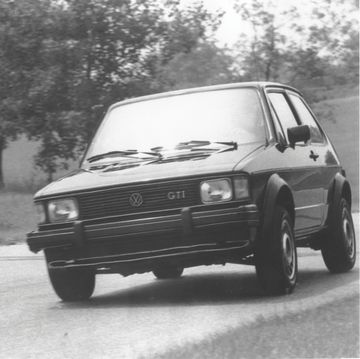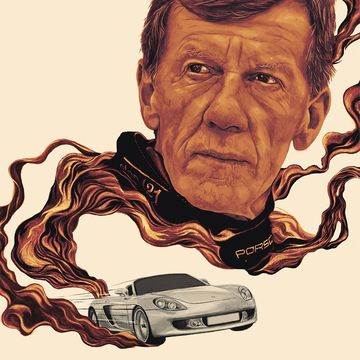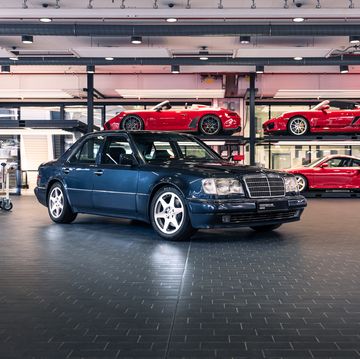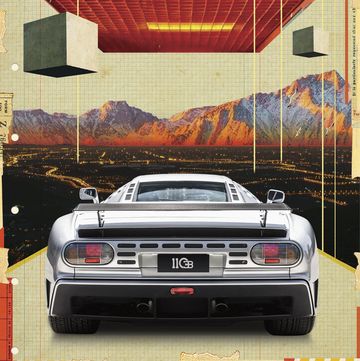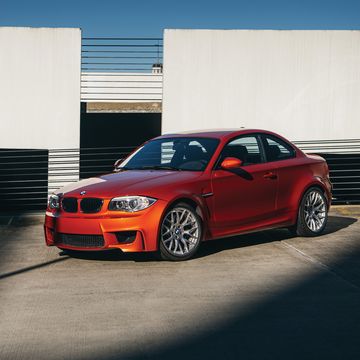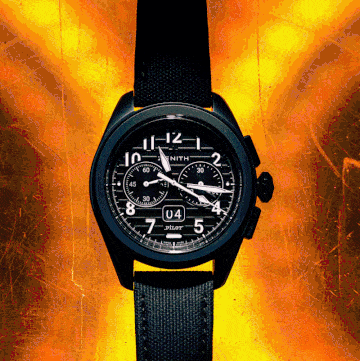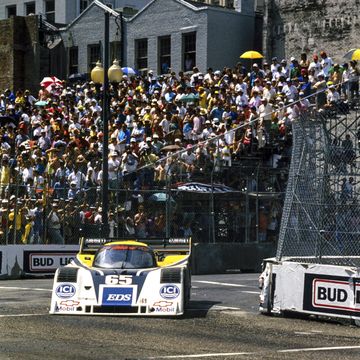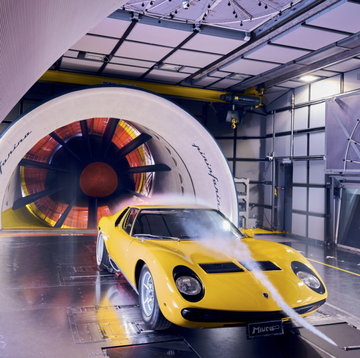Lest you think breathless warning labels are a recent invention, note this line from the mid-Sixties tome Workshop Manual, Type 600 The Grand Mercedes: “It cannot be too highly stressed that it is mortally dangerous to open the oil-pressure container!” How did Mercedes find itself in a situation that would require such a dire warning? By building the world’s most luxurious car, the 1963-1981 600 “Grosser” sedan and limo. To meet such a lofty goal—and the desires of celebrities, dictators, and celebrity dictators—Mercedes included 30 hydraulic switches, 12 double-acting hydraulic cylinders, 10 single-acting cylinders, six self- resetting single-acting units, a pump, a reservoir, and an accumulator. Then the company tied them together with 1/8-inch-diameter lines arranged to mimic an aerial view of Byzantium and coursing with hydraulic oil at 2400 psi. That’s twice the pressure of a fire hose, well above the force needed to pierce human flesh. Comfortingly, it is well below the pressure required to cut bone. The goal of all this perilous complexity, apart from reinforcing a cliché about German overengineering? Comfort. All of the above were part of the “Comfort Hydraulic” system, which delivered silent force to power-adjustable niceties throughout the beast. Electric motors would have taken up too much space, claimed Mercedes. Enter at your own risk.
SIGN UP FOR THE TRACK CLUB BY R&T FOR MORE EXCLUSIVE STORIES
This story originally appeared in Volume 6 of Road & Track.
A. An underhood hydraulic pump, driven off of the 600’s V-8, provides the pressure. A small 0.7-liter accumulator, filled with nitrogen and hydraulic oil, conserves enough force to open or close the windows 10 times after the engine is turned off.
B. The driver’s door is packed with four switches (one for each side window), a hydraulic cylinder for window raising and lowering (with adjustable speed), and a second cylinder for cinching the door shut. Careful with the window-switch block; a replacement is more than $11,000. There’s also a separate vacuum-operated central locking system.
C. A row of switches on the center of the dashboard controls the optional power sunroof and retractable partition glass. The other three switches operate the ventilation dampers and temperature control.
D. If you’ve always wanted hydraulic oil at the pressure of a medium-duty power washer directly over your head, the 600’s optional sunroof has you covered.
E. Each six-way adjustable front seat contains three adjustable-speed switches and four hydraulic cylinders. The rear seats rely on but two cylinders connected to switches on the rear doors for their simple adjustment. Positively plebeian!
F. The flip of a steering-column-mounted switch toggles the four suspension dampers between hard and soft settings. This is not to be confused with the suspension’s air-springs, which are part of an entirely different complicated system.
G. A single hydraulic cylinder can bring the trunk lid down with shocking force, but it’s adjustable to reduce its finger- smashing potential. If the Comfort Hydraulic system should fail (and how couldn’t it?), there’s a box in the trunk with four wedges to force between the glass and the jambs to keep the windows up, along with some pins to keep the front seatbacks upright.
Daniel Pund was named Road & Track's editor-in-chief in 2024 after helping to re-invent the venerable magazine brand as executive editor. For around 30 years, Pund has toiled away as a feature writer, car reviewer, editor, and columnist for every car magazine that matters (including Car and Driver and Autoweek) and a few that didn’t. He’s also contributed to Esquire and GQ and other general-interest publications.

